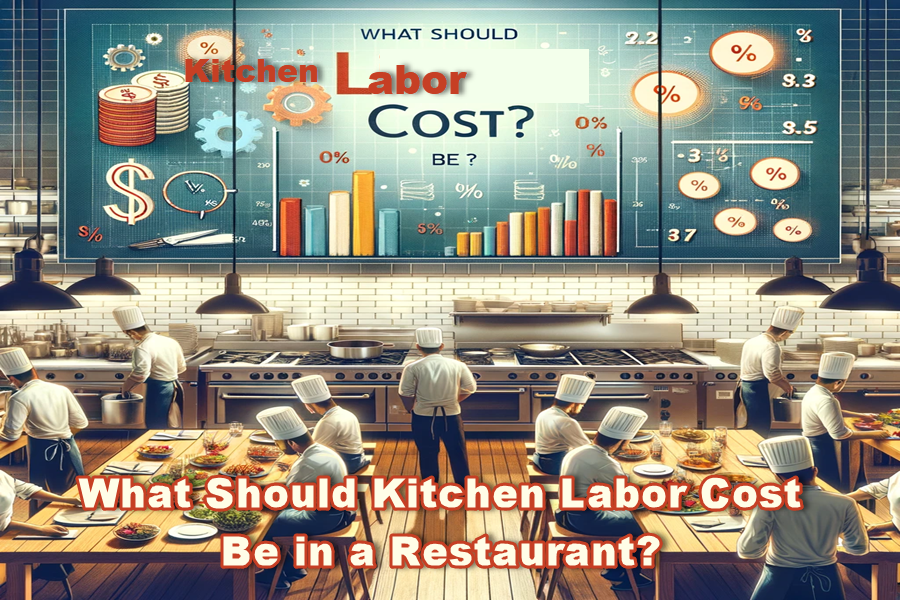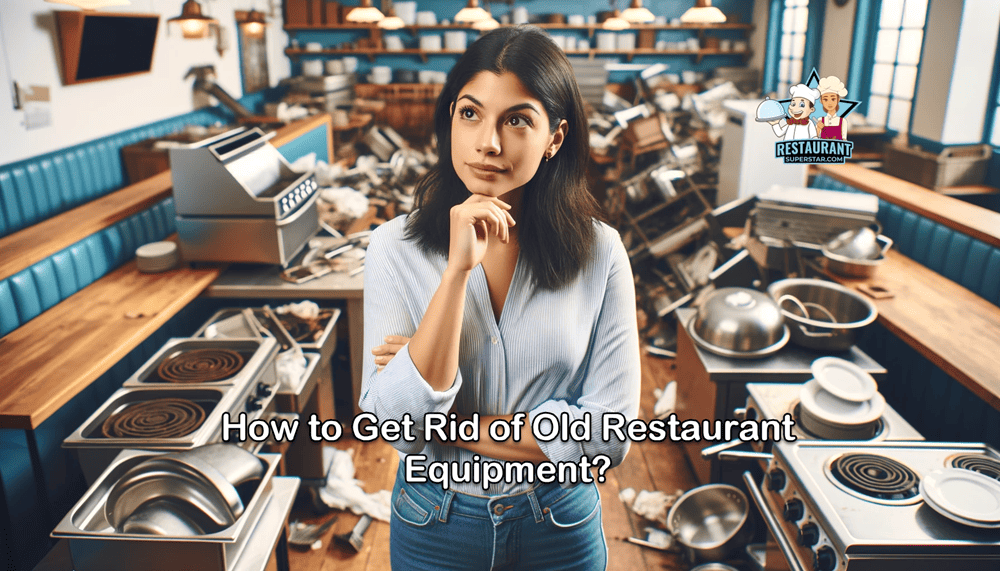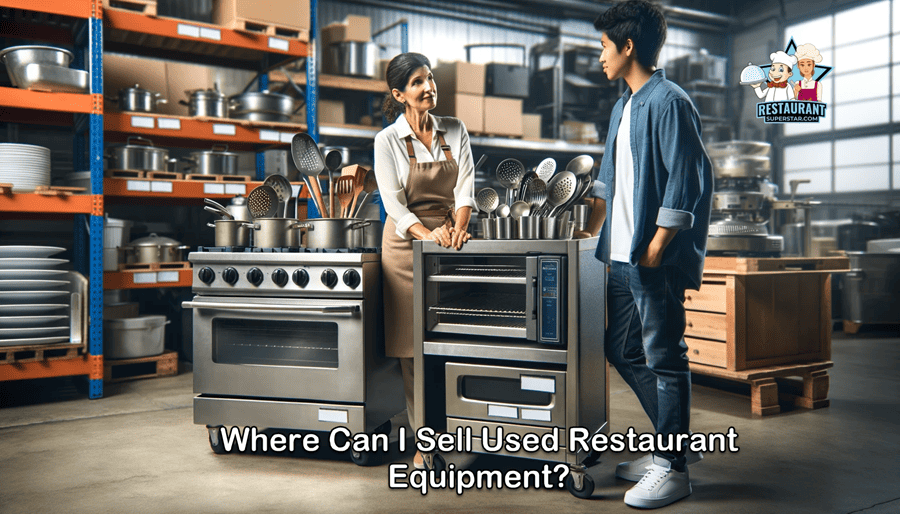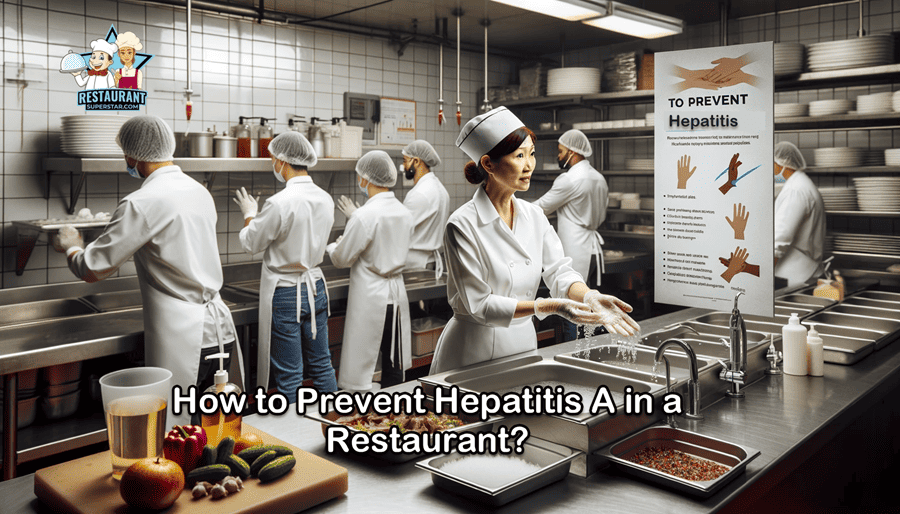How Often Should a Restaurant Hood Be Cleaned in 2024?
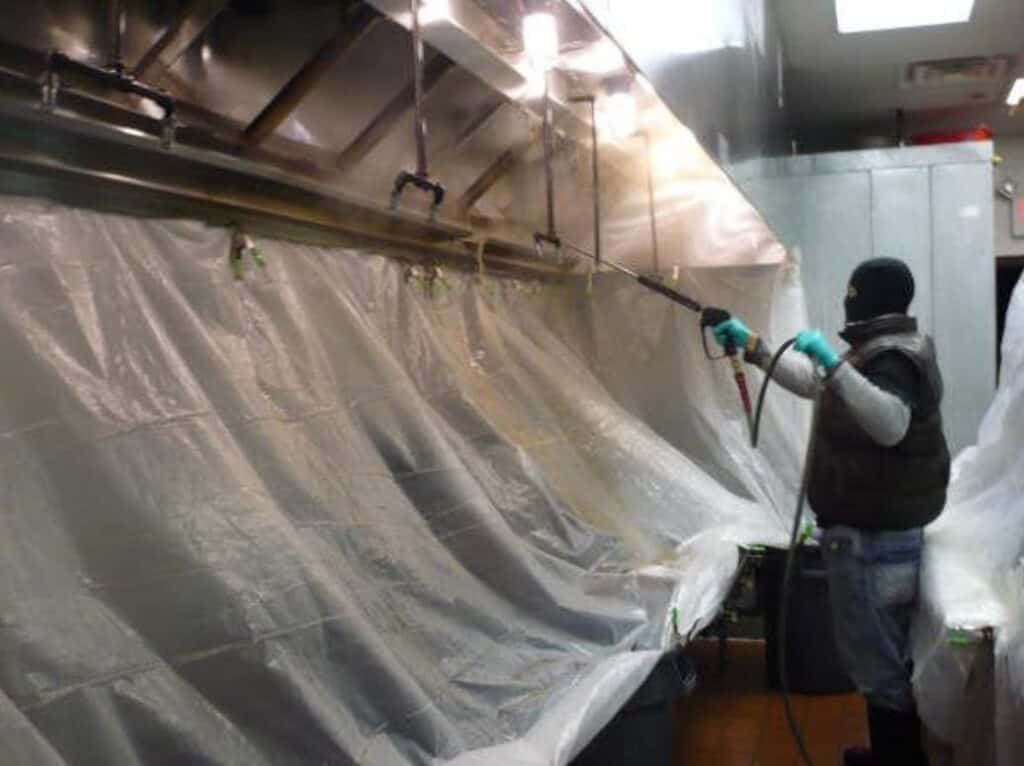
Hi. I’m Jack Bastide. If you are wondering How Often Should a Restaurant Hood be cleaned you are in the right place. In this article we will cover this question as well as many other important questions about restaurant hood systems.
If your oven uses solid fuel such as coal, charcoal, or wood your restaurant hood should be cleaned once a month. Restaurant hoods in commercial kitchens that don’t use solid fuel can be cleaned once per quarter. Lower volume establishments should be cleaned every 6 months – 1 year.
What Is a Restaurant Hood?
A restaurant hood system is a piece of restaurant equipment installed over your industrial oven. It collects heat and oil so that it does not spread throughout your kitchen. With less oil everywhere, your kitchen will be cleaner and safer. You also need not be as concerned about a grease fire beginning when the grease is contained in the restaurant hood.
What is Restaurant Hood Cleaning?
Commercial restaurant hood cleaning involves eliminating grease buildup from the kitchen’s exhaust systems’ ductwork, hoods, fans, and vents. When grease builds up in kitchen exhaust systems and ductwork, it may lead to serious fires if not cleaned regularly.
How Do You Clean a Restaurant Hood?
If I were you, I would spend my time marketing my restaurant and leave the hood cleaning to a local professional technician. But since you asked, here are six simple procedures for cleaning a commercial kitchen exhaust hood.
Step 1: Preparation for Restaurant Hood Cleaning
Close all of the valves. Unplug all of your devices and let them cool down. Everything around you should be completely off.
Remember to cover everything with plastic sheets to protect it from splashing grease and gunk. You will need rubber gloves, a concentrated degreaser, plastic coverings, a scrubbing pad that is not abrasive, a soft brush, and a plastic pail or bucket.
Step 2: Cleaning Your Hood Filters
Filters should be easily removed. Once they are out, remove the stainless steel spacers near the grease traps. Give your filters a scrub with a soft brush or nonabrasive scouring pad. You can also put them in the dishwasher.
If your filters are heavily covered with grime or too big for the dishwasher, you’ll need to fill a sink with water and a concentrated degreaser to remove it. Next, soak your filters and spacers in water for at least three hours. Then let them dry for a few hours.
Step 3: Cleaning the Grease Trap in a Restaurant’s Hood
You should now be able to take out the grease cups. Be cautious not to spill any remaining oil when removing them. Remove the grease and put it in a sturdy, airtight container for disposal. Grease should not be poured down the sink or toilet as it will harden and produce obstructions.
Use soft-bristled brushes or non-abrasive scouring pads to clean out the traps. Trap traps are often too large to fit inside the dish pit. Soak the filters in the degreaser solution.
Step 4: Cleaning the Restaurant Exhaust Hood Fan
Remove the blower blades or fans. Dual-motor and dual-fan exhaust systems are common in low-profile hoods. To provide a uniform airflow distribution, it takes air from both sides. The center hub of each fan should be pulled down by unscrewing the center hub.
Use a soft-bristle or non-abrasive scrubbing brush to clean your fan blades. The filters and traps can be added to the soaking solution if they’re very dirty.
Step 5: Cleaning of the Restaurant Hood Duct
In a small sanitizing bucket, make the same concentration of degreaser solution as in your sink. If you clean the inside and outside of the range hood, use the same scouring pad or soft-bristle brush.
When the exposed ducting has been thoroughly washed and any grease removed, you can replace the rest of the components.
Step 6: Assemble the Vent Hood in the Kitchen.
Now that you’ve washed and soaked everything, it’s time to rinse and dry. To begin, re-insert the cooling fans.
Remember that a dual-fan system’s fans are directional while changing them. They are not interchangeable. The one on the left must return to the left, while the one on the right must do the same.
The fan’s protective covers should be on at all times. When grease traps are installed, they may be overlooked since they used to be used for hanging traps. However, even while the motor runs, these guards keep you from touching the fan blades.
Fans, spacers, and filters should be reinstalled after you’ve replaced them. Clean up by removing the plastic sheets around you and mopping the flooring.
You’re all done!
How Often Should a Restaurant Hood Be Cleaned?
The National Fire Protection Association (NFPA) makes the following recommendations for restaurant hood cleaning.
Ovens with Solid Fuels (Clean Monthly) – The NFPA recommends that hoods in kitchens and restaurants that utilize solid fuel be cleaned at least once monthly. Solid fuels, such as wood, charcoal, and coal, are used for cooking and consist of solid substances.
High-Volume KItchens with No Solid Fuel (Clean Quarterly) – Commercial range hoods in high-volume establishments that do not utilize solid fuel should be cleaned quarterly. This pertains to most Diners, fast-food restaurants, and commercial dining establishments.
Lower Volume KItchens with No Solid Fuel (Every 6 months) Any establishment with a lower volume of use than a typical commercial eating facility can be cleaned every 6 months.
Events and Seasonal Activity (Annually) Seasonal day camps, churches, special occasions, and low-volume restaurants can be cleaned annually.
These are general restaurant hood cleaning guidelines. Your eye should be your guide.
How Long Does It Take To Clean a Restaurant Hood?
The average time required for exhaust hood system cleaning is 3-4 hours. The amount of time it takes depends on several different things. When cleaning a kitchen, the amount of time between cleanings, its size, and the number of hoods/fans all have a role.
How Much Does It Cost to Clean a Commercial Kitchen Hood?
You should expect to pay around $100 per hour for two men to clean a hood. Depending on the project’s scope, additional fees may be incurred for travel expenditures, access panel removal/reinstallation, and bigger kitchens.
How Much Does a Hood Cost For a Restaurant?
A new commercial kitchen hood may cost between $950 and $1,200 per linear foot to install. Installing a 10-foot hood might cost as much as $10,000.
What is a Type 1 and Type 2 Kitchen Hood?
For appliances that generate oily by-products and smoke while cooking, Type 1 hoods are recommended. Type 1 hoods are often called “Grease Hoods” to remove grease particles from the air.
Deep fryers, cooktops, open-flame stoves, conveyor-pizza ovens, charbroilers, and other kitchen equipment that cooks oily meals commonly have Type 1 hoods. Type 1 hoods should be cleaned more often to minimize grease buildup that may cause damage and fire concerns.
Type 2 Hoods concentrate on non-cooking items in the kitchen, such as utensils and dishes. Dishwashers, ovens, pasta cookers, and other non-smoking or grease-producing appliances fall into this category.
Condensate and Heat Hoods are two of the most common names given to Type 2 hoods because of their focus on removing heat and steam from the air.
Condensation from the steam exhaust is captured in the Type 2 Condensate Hood’s full-perimeter gutter and drain. Workplace comfort is improved by using exhaust hoods like these to remove moisture and heat from the air.
The Type 1 Hood is best for cooking equipment that produces oil and grease by-products. In contrast, the Type 2 Hood is best for other kitchen appliances and equipment that need cooling and dehumidifying. T
Do Pizza Ovens Need a Hood?
Yes, commercial pizza ovens typically require a hood system to prevent smoke and fumes from escaping. Some pizza ovens have a built-in hood, but others require the purchase of an additional hood for the pizza oven.
How Do Restaurant Hood Systems Work?
Restaurant hood Systems are used in commercial kitchens to properly handle grease and grease vapor flow to discharge odors and air pollutants while also removing moisture from the air. The exhaust fan draws air through the hood in reverse to remove smoke, soot, steam, heat, and grease vapors from your facility.
How Often Should You Clean Restaurant Hood Filters?
It’s generally recommended that restaurant hood filters be cleaned every two or three weeks. Cleaning kitchen hood filters regularly is necessary to avoid the accumulation of grease. It’s important to check in every two weeks for cleaning or replacing kitchen hood filters, but some may last up to a month with proper care.
Conclusion
Generally, restaurant hood systems should be cleaned at least once every 3 months or once a month if using solid fuel.
While it is possible to do it yourself, we recommend you use a professional. If you don’t frequently clean the hood, you risk mold or bacteria growing in your food prep area. Also, if you use hood fans and heaters, you must clean them as often as possible.
Jack Bastide is a Restaurant Consultant focusing on Restaurant POS technology. Make sure to check out our world famous restaurant resources page for a comprehensive offering of hand picked resources and tools to help your business. You can also check out some of our other restaurant business articles.

